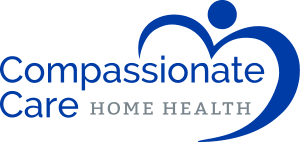Every 45 seconds someone in America will experience a stroke, according to the latest reports from the National Stroke Association. In fact, stroke is the third leading cause of death and the leading cause of adult disability in this country. Read below to learn about what happens during a stroke, how to recognize when someone is having a stroke, and how to lower your chances of being a stroke victim.
What Happens when Someone has a Stroke?
A stroke, sometimes called a Cerebral Vascular Accident (CVA) or “brain attack,” happens when the blood and oxygen flow to the brain are interrupted. The risk of brain damage increases with every minute that brain cells are deprived of oxygen during a stroke. Damage to the affected areas of the brain may cause physical disability, emotional instability, speech problems, memory loss and paralysis.
It is extremely important to be able to recognize the symptoms of a stroke because treatment is most effective when given immediately.
How to Recognize a Stroke
When someone is experiencing a stroke, the victim may have:
- Sudden numbness – often on just one side of the body
- Sudden weakness – often on just one side of the body
- Sudden confusion, difficulty speaking or understanding speech
- Sudden trouble with vision
- Sudden dizziness or loss of balance
- Sudden severe headache with no known cause
The National Stroke Association encourages Americans to become familiar with stroke symptoms by learning to Act F.A.S.T.:
- F = Face: Ask the person to smile. Does one side of the face droop?
- A = Arm: Ask the person to raise both arms. Does one arm drift downward?
- S = Speech: Ask the person to repeat a simple phrase. Is the speech slurred or strange?
- T = Time: If you observe any of these signs, then it’s time to call 9-1-1.
How to Lower Your Chances
There are steps one can take to lower the chances of having a stroke, from controlling blood pressure and cholesterol to making lifestyle changes to be healthier. Sixty million Americans have high blood pressure and many don’t even know it. Monitoring and controlling blood pressure can help lower your chances of having a stroke. The gradual build-up of cholesterol (plaque) in arteries may lead to blockage, resulting in a stroke. Therefore, monitoring and managing cholesterol can help lower your chances of having a stroke. Stroke risk is two and a half times greater in people with diabetes as compared to those without diabetes. If you have diabetes, work with your doctor to control your blood sugar levels. And above all, make lifestyle changes to exercise, avoid smoking, eat a well-balanced diet and drink alcohol only in moderation.
For more information, you can visit the National Stroke Association website at www.stroke.org.
